 Now you're cooking with grease!, as my grandma used to say when something or someone got on the right track. On several recent days, the thermometer crested the 60-degree mark that is the demarcation line between winter's coattails and spring's hello handshake. The daffodills, jonquills, primroses, tulips, hyacinths, snowdrops and a few of the windflowers are halfway up out of the ground, a handful already opening blooms in the warm afternoon sunshine. True, a temperature backslide and snow flurries are forecast for April's second half, but the setback will be fleeting, the seesaw ride of springtime in northern Michigan has begun in earnest.
Now you're cooking with grease!, as my grandma used to say when something or someone got on the right track. On several recent days, the thermometer crested the 60-degree mark that is the demarcation line between winter's coattails and spring's hello handshake. The daffodills, jonquills, primroses, tulips, hyacinths, snowdrops and a few of the windflowers are halfway up out of the ground, a handful already opening blooms in the warm afternoon sunshine. True, a temperature backslide and snow flurries are forecast for April's second half, but the setback will be fleeting, the seesaw ride of springtime in northern Michigan has begun in earnest.Thus far the only sowing has been a ring of sweet pea seeds, around the base of a metal tripod sculpture well-suited to their climbing propensities. They are the only plant on this year's roster that can be, and actually does best if planted a month or so before the night (and occasional day) frosts cease. Each pea seed was nicked with a nail clipper to open a breach in the hard shell, then they were left on a water-soaked paper towel for 24 hours for pre-planting moisturizing, then sown in fresh-laid composted cow manure, the par excellence substance in which to plant everything and anything. Next planting date will be the rudbeckia and verbena bonariensis seeds on April 30, flowers that want no more, no less than planting just a couple weeks before likely last frost. April 30 because that's the next day when the moon, stars and planets are in favorable conjunction for sowing flower seeds (see below "Moonlight Becomes Your Garden," a February 13, 2009 post, for more on astronomy and planting).
Gardening time functions mysteriously, much like Internet time or home carpentry time – whatever length of time one estimates will be spent on any given foray into the garden generally, reliably will end up taking two or three times longer. Look closely and there are always more tasks to be taken in hand in a garden, one more patch of weeds to clear, dry spots to water, birdbaths to fill, branches to prune. Thus, when setting out with the single, crisply defined goal of sweet pea seeding, a couple hours later found, also, the edging along the backyard ornamental grasses bed refreshed with new, fallen, woodlot-scavenged birch logs; a dozen or so wild, volunteer sprouts of cornflower (chicory) plants pulled (weed, wildflower, call it what you will, it will colonize the whole yard in short order if left unchecked); several handfuls of composted cow manure laid at the base of each rosebush and peony to start their seasons with a big dollop of high-nutrient dirt; and a couple garlic cloves plugged into the soil beneath each rosebush to fend off opportunistic deer and also boost flowering, both of which garlic does masterfully.
And in honesty, probably a good spell of the time on this garden venture, as on every one taken, was spent in simple, idle stillness and close observation. Just walking around my small village lot and pausing to examine and admire the minutiae of its colors, scents and textures gives me an inordinate amount of happiness. Pinching a lavender stalk or sage leaf to release their inimitable, earthy and heartwarming perfumes brings gladness and calmness. Feeling the loamy softness of compost sift through my hands induces purposefulness, reassurance, connectedness to the natural world. Staring at the whorls and wrinkles of birch or red oak bark, or the indigo of an opening primrose, or the innumerable variations of the color green in the score of plants putting out leaves – just being and seeing in the garden could occupy me completely contentedly for hours, and never fails to imbue me with feelings of great well-being. In the garden, active or lollygagging, all becomes right with the world, every time.
Also generating feelings of well-being and rightness is the unprecedented groundswell of gardening and environmental activism rolling across America this spring. The presidential family in the White House aren't the only ones digging up a lawn to plant a vegetable garden, there are more home gardens, community gardens, small holdings, and pots filled with tomato plants and herbs on patios and balconies than for decades past. Burpee and other seed companies report an increase of fruit and vegetable seed sales of a whopping 30% this spring over previous years. Natural, sustainable, organic gardening and farming methods and products are to be found in every garden store and even big box nursery, for the first time given shelf space equal to that of noxious, big chemical company, artificial fertilizers, herbicides and pesticides. There is a national and governmental commitment to pursuit of environmentally sound land and forest preservation and alternative energy development on a scale that has not been evident since the founding of the conservation movements and the national parkland set-asides during the early 1900s.
The raised national environmental consciousness has been brought about by the perfect storm of a crashing economy, a revulsion for dependence upon dirty petroleum products from foreign countries that largely wish America ill, and fear for the future of a planet weakened and struggling under the violent storms and rising temperatures of global pollution. Out of this miasma of bad acting and vile values of recent decades is emerging a determination to right our ways, restore health to our food and to the way we conduct our lives, and to take better care of the irreplaceable earth. Following the knowledge laid down by Alice Waters, J. I. Rodale, John Muir, Rachel Carson, Frederick Law Olmstead, Theodore Roosevelt and other pioneers of conservation, organic agriculture and natural foods, America is turning into a nation of green gardeners, tree planters, ecological preservationists. This springtime rebirth and regeneration stretching from coast to coast feels marvelous, and you can bet your garden galoshes that's exactly how it feels to the earth, as rakes and hoes get busy scratching her continental back.
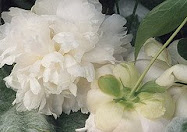


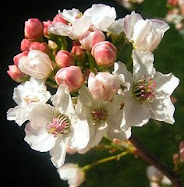
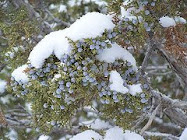

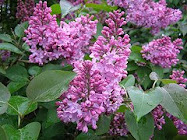
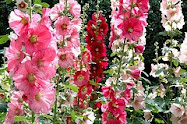
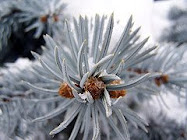
No comments:
Post a Comment